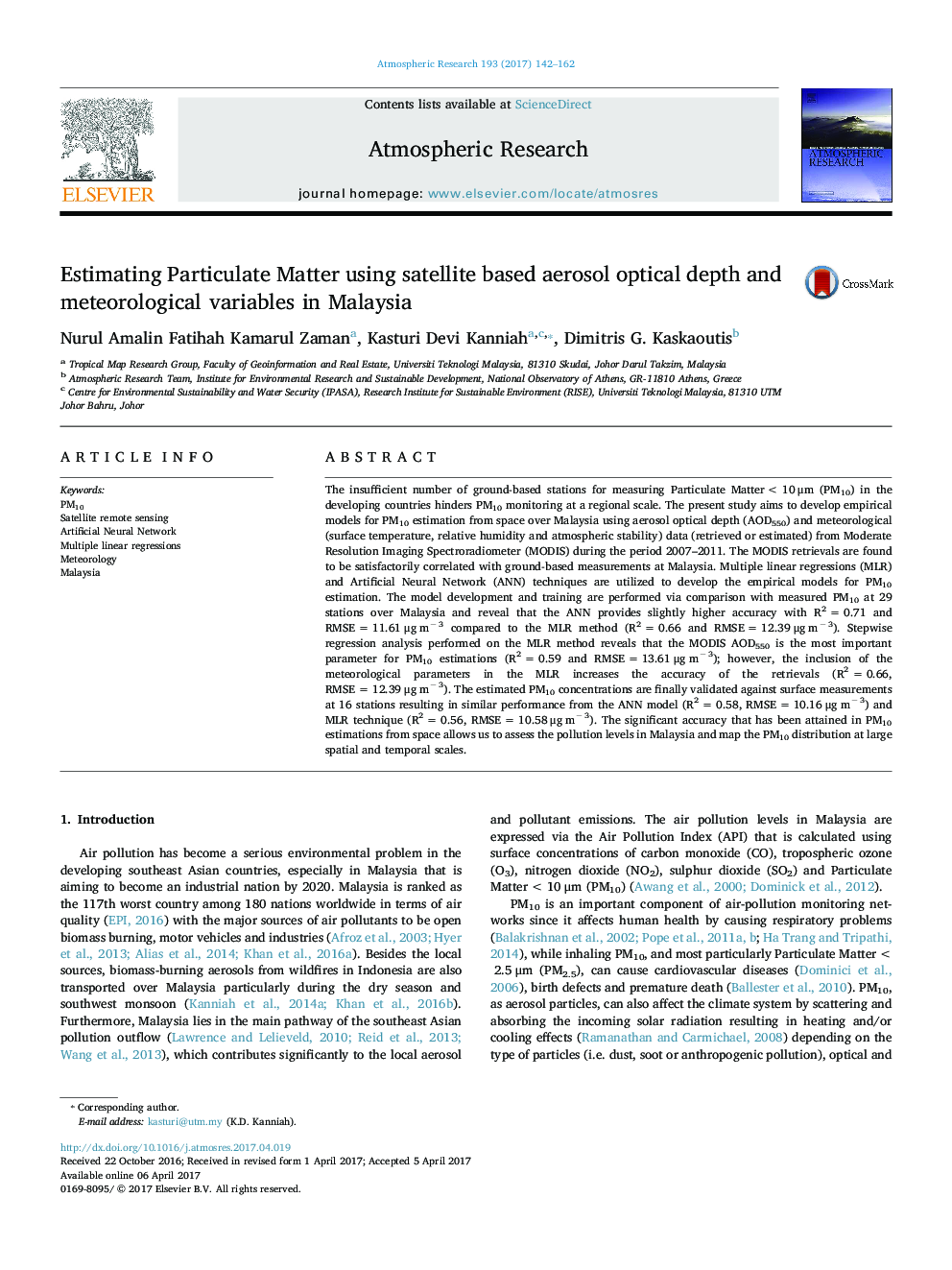| کد مقاله | کد نشریه | سال انتشار | مقاله انگلیسی | نسخه تمام متن |
|---|---|---|---|---|
| 5753643 | 1620488 | 2017 | 21 صفحه PDF | دانلود رایگان |
- PM10 monitoring in Malaysia using remote sensing and meteorological data
- Implementation of Artificial Neural Network and multiple linear regression
- Better overall accuracy with Artificial Neural Network technique
The insufficient number of ground-based stations for measuring Particulate Matter < 10 μm (PM10) in the developing countries hinders PM10 monitoring at a regional scale. The present study aims to develop empirical models for PM10 estimation from space over Malaysia using aerosol optical depth (AOD550) and meteorological (surface temperature, relative humidity and atmospheric stability) data (retrieved or estimated) from Moderate Resolution Imaging Spectroradiometer (MODIS) during the period 2007-2011. The MODIS retrievals are found to be satisfactorily correlated with ground-based measurements at Malaysia. Multiple linear regressions (MLR) and Artificial Neural Network (ANN) techniques are utilized to develop the empirical models for PM10 estimation. The model development and training are performed via comparison with measured PM10 at 29 stations over Malaysia and reveal that the ANN provides slightly higher accuracy with R2 = 0.71 and RMSE = 11.61 μg mâ 3 compared to the MLR method (R2 = 0.66 and RMSE = 12.39 μg mâ 3). Stepwise regression analysis performed on the MLR method reveals that the MODIS AOD550 is the most important parameter for PM10 estimations (R2 = 0.59 and RMSE = 13.61 μg mâ 3); however, the inclusion of the meteorological parameters in the MLR increases the accuracy of the retrievals (R2 = 0.66, RMSE = 12.39 μg mâ 3). The estimated PM10 concentrations are finally validated against surface measurements at 16 stations resulting in similar performance from the ANN model (R2 = 0.58, RMSE = 10.16 μg mâ 3) and MLR technique (R2 = 0.56, RMSE = 10.58 μg mâ 3). The significant accuracy that has been attained in PM10 estimations from space allows us to assess the pollution levels in Malaysia and map the PM10 distribution at large spatial and temporal scales.
Journal: Atmospheric Research - Volume 193, 1 September 2017, Pages 142-162
